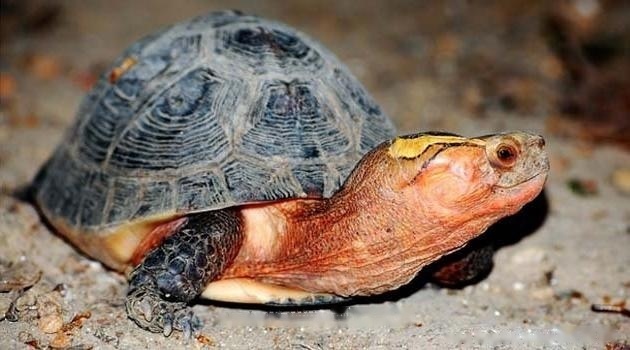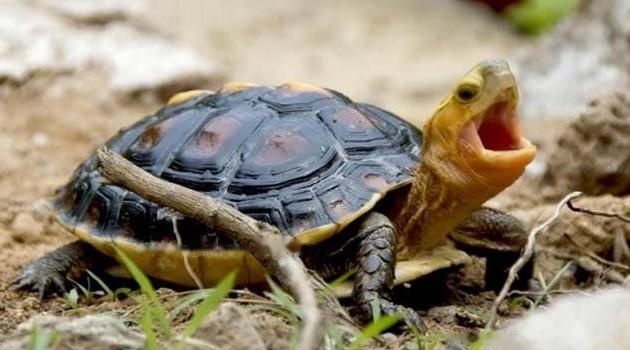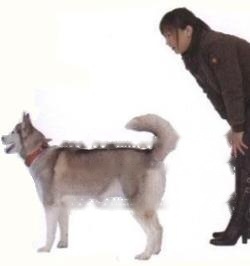Southern China yellow-margined box turtle, also known as Chinese box turtle, golden thread, snake-eating turtle, and golden-headed turtle. Semi-aquatic (partial terrestrial) in nature, inhabits forest edges, weeds, and shrubs in hilly and mountainous areas, and in relatively quiet places such as rock crevices and under tree roots. The activity is dark and not far from a flowing valley. Likes to live in groups, and often see multiple turtles in the same cave. The pattern of diurnal activity varies with the seasons. When the head, tail and limbs are retracted into the shell, the plastron and carapace can be tightly closed, so it is called yellow-edge box turtle. It is a kind of turtle that is very easy to domesticate and raise. They are not afraid of life and have tenacious vitality.

1. Appearance characteristics of the southern China yellow-margined tortoise
The southern China yellow-margined tortoise has a smooth head, Colorful, yellow and chartreuse on the sides and olive or brown on top. The front of the snout is flat, and the upper beak has a clear curve of the yellow-margined box turtle. The carapace is dark and high arched with a light band (some have 3) and some midribs (midline of the carapace), the colour of which degenerates with age. The annual rings on each scutellum are clearly visible. The color of the edge shield is yellow. The plastron is dark brown with a yellow edge. There are ligaments between the thoracic and abdominal shields, the front and rear half can be completely closed, the scales on the limbs are developed, the claws are five in front and four in the back, with underdeveloped webs, and the tail is moderate. When the head, tail and limbs are retracted into the shell, the plastron and carapace can be tightly closed.
2. Habits and characteristics of the yellow-margined turtle in South China
The yellow-margined turtle in South China is not afraid of life, and its vitality is tenacious. It is semi-aquatic and terrestrial and cannot live in deep water. The yellow-margin closed turtle in southern China inhabits forest margins, weeds, and shrubs in hilly and mountainous areas, and in relatively quiet places such as under tree roots and rock crevices. The activity is dark and not far from the valley with flowing water. Likes to live in groups, and often see multiple turtles in the same cave. Circadian activity patterns vary by season. When hibernating, they like to hide in caves, piles of branches or under a thick layer of withered grass, and most of them are in the sun and leeward. When the temperature is 13 ℃, the turtle wakes up again. Omnivorous, wild turtles eat plant stems and leaves and various insects and worms. Under the condition of artificial breeding, it can also eat fruits, vegetables, rice, earthworms, mealworms, poultry offal, lean pork, fish, etc., especially animal food.

3. Feeding methods of the yellow-margin closed turtle in southern China
【Environment】
South China's yellow-margined turtle is a semi-aquatic turtle. The breeding environment should be arranged in an amphibious manner, and the water depth should not be higher than 2/3 of the height of its carapace, or the turtle should not float in the water. Turtles can also be raised in shallow water 5 cm deep, which has the advantage of being odorless and easy to disinfect and clean. Prepare a large feeding area and cover with moss or fallen leaves and bark. Since the southern Chinese yellow-margined tortoise requires a high humidity environment, the moss should be kept moist. Some breeders report that the turtles are happy with plants in their enclosures, and individual breeders grow turf in their enclosures, and the turtles are well-adapted. Plants are also good for increasing humidity. There should be small ponds for drinking and bathing, and the water temperature of the pond for bathing should be close to the environment. Keep cool shaded areas as well as warm areas with sunlight. A full-spectrum reptile light is recommended as it contributes to the physical and mental health of reptiles.
【Feeding】
Feed some different species of food to Hainan yellow-fronted turtles every day, because each Turtles have different tastes. I believe there will always be one that can lure them. Generally, it is normal to not eat for 2 months. They can also withstand it, but the water must not be less. It is difficult to starve to death, but dehydration is fatal. You can try to cut the tomatoes directly into strips, pick up the turtle at a 45-degree angle, gently rub it under the turtle's nose, and put it in after opening its mouth. You're done. If it still doesn't work, it may need to be fed. You can stand the turtle upright and touch its nostrils with a hard object. Generally, the turtle will open its mouth angrily, take the opportunity to put a finger in its mouth and let it bite, and then put The tomato puree in the syringe is slowly injected or the tomato strips are put into its mouth. After a few feedings, the turtle can usually start eating.
【Daily】
At the beginning of November every year, due to the drop in temperature, turtles gradually enter hibernation. Centimeter-thick moist sandy soil, placed indoors in the sun, to make it hibernate naturally. In late March of the following year, when the temperature rises to about 18-19 ℃, the turtle starts to eat. The initial feeding should be small and fine, especially after feeding, the ambient temperature should not be lower than 15 ℃, otherwise it will cause indigestion and other diseases. As the temperature gradually rises and stabilizes, the amount of bait can be increased accordingly, and some antibiotics such as shammycin should be fed regularly. Young turtles under 50 grams should also be fed a little calcium to prevent bone loss. softening. An easy-to-raise breed that beginners can try. Raised in a terrestrial environment, if there is enough space, a larger water container can be set up, and there should be a cooler and warmer place on the land. They can withstand short periods of cold, but don't stay below 12C for long periods of time.
![[Dog Training 5] The training method of pet dog dining etiquette](/static/img/12192/12192_1.jpg)





